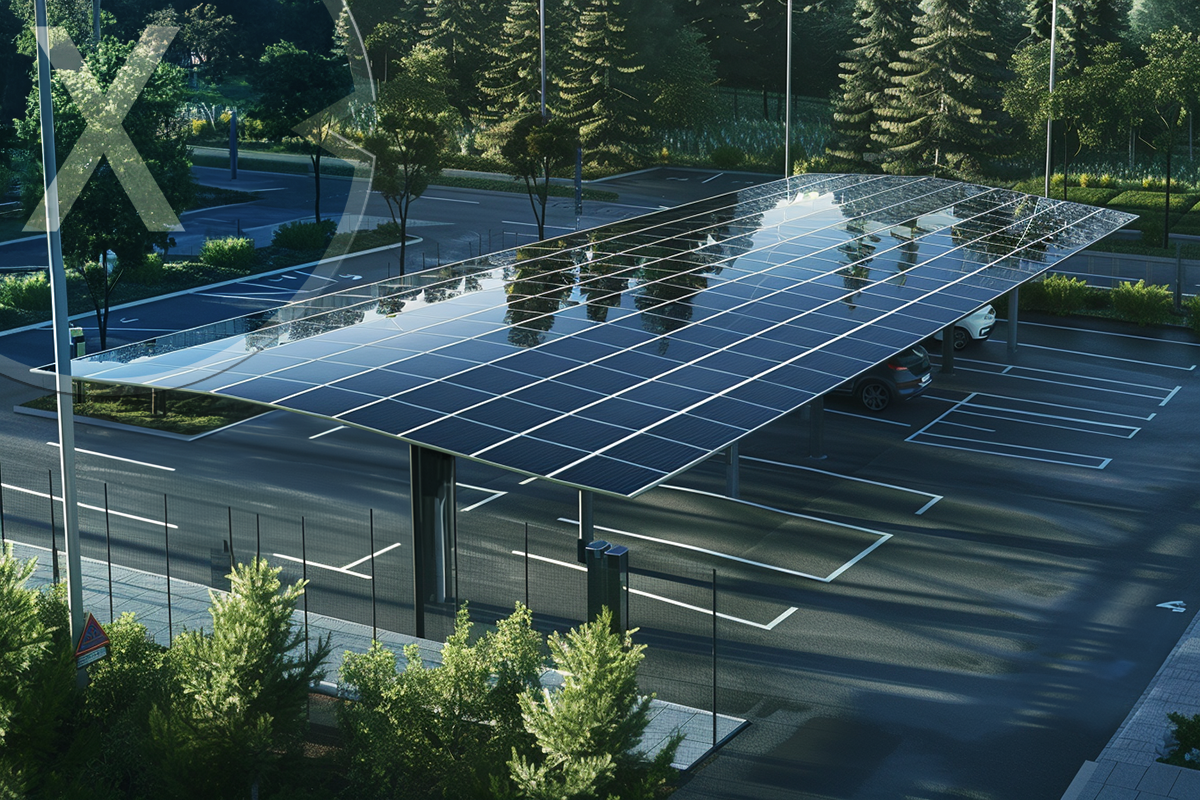Published on: October 29, 2024 / Update from: October 29, 2024 - Author: Konrad Wolfenstein
The combination of mobility and renewable energies: solar parking spaces as an ecological revolution in park & ride systems
Growing urbanization and ever-increasing commuter traffic present cities and communities with enormous challenges. At the same time, the need to combat climate change and reduce CO₂ emissions is pushing for innovative solutions. A promising answer to these challenges lies in combining mobility and renewable energies: solar parking spaces at park & ride facilities. This combination could mean an ecological revolution and make a significant contribution to sustainable development.
The role of Park & Ride facilities in the modern transport system
Park & Ride facilities are an essential part of modern transport concepts. They allow commuters to park their vehicles on the outskirts of the city and take public transport to the city center. This relieves inner cities of private traffic, reduces traffic jams and reduces air pollution. Nevertheless, there is potential to make these systems even more efficient and environmentally friendly.
Solar parking spaces: More than just energy production
Solar parking spaces are parking areas that are covered with photovoltaic modules. These modules generate electricity from solar energy while providing protection for the vehicles parked below. The advantages of solar parking spaces are diverse:
Energy production
Using solar energy produces clean electricity that can be used locally or fed into the public grid.
Space efficiency
Existing parking areas are used twice, without requiring additional space.
Vehicle protection
The roof protects cars from the elements such as rain, snow and strong sunlight.
Reduction of heat islands
The canopies can help reduce surface temperatures and improve the microclimate.
Integration of covered PV parking spaces in park & ride systems
The combination of solar parking spaces with Park & Ride systems offers numerous advantages:
1. Reduction of CO₂ emissions
By promoting local public transport and using renewable energies, emissions are significantly reduced.
2. Promoting electromobility
The solar energy generated can be used directly to charge electric vehicles, increasing the acceptance and distribution of electric cars.
3. Cost savings
In the long term, operating costs can be reduced by producing your own electricity.
4. Role model function
Such systems set an example for sustainability and can inspire other communities.
Practical implementation and examples of success
There are already successful projects that demonstrate the feasibility and benefits of solar parking spaces:
Germany
Some cities have started to equip their park and ride facilities with solar roofs. This not only covers the system's electricity needs, but also feeds excess energy into the grid.
Austria
There are projects in Vienna that combine solar parking spaces with charging stations for e-bikes and e-cars to make it easier to switch to environmentally friendly means of transport.
Netherlands
Here, entire parking garages were equipped with photovoltaic modules, which supports the municipal utilities in providing electricity and contributes to CO₂ reduction.
Implementation challenges
Despite the obvious advantages, there are also challenges:
Investment costs
The initial investment for installing photovoltaic systems and charging stations can be high.
Technical complexity
Integrating renewable energy into existing infrastructure requires expertise and careful planning.
Approval process
Building regulations and permits can delay the process.
Acceptance among the population
Education and communication are needed to convince citizens of the benefits.
Photovoltaic systems make solar parking spaces more attractive
The further development of technologies and falling costs for photovoltaic systems are making solar parking spaces increasingly attractive. In addition, government funding programs and climate protection goals support the implementation of such projects. In combination with intelligent energy management systems, solar parking spaces can become important building blocks of sustainable urban development.
Combining electromobility and renewable energy
Electromobility is becoming increasingly important. Electric vehicles offer the potential to decarbonize the transport sector. However, the ecological advantage is only fully exploited if the electricity required comes from renewable sources. This is where solar parking spaces come into play:
Direct use
Vehicles can be charged directly on site with solar power, minimizing transmission losses.
Load management
Intelligent systems can optimize loading times and reduce network load.
storage
Excess energy can be temporarily stored in battery storage and accessed when needed.
Social and environmental benefits
The implementation of solar parking spaces in park & ride facilities offers not only ecological but also social advantages:
Awareness raising
Visible sustainability projects raise public awareness of environmental issues.
Jobs
The planning, construction and maintenance of such systems create local jobs.
Image gain
Municipalities are positioning themselves as pioneers in climate protection, which increases their attractiveness for residents and companies.
Steps for successful implementation
In order to successfully integrate solar parking spaces into park & ride systems, the following steps should be taken into account:
1. Needs analysis
Determination of energy needs and potential on site.
2. Planning and Design
Development of a concept taking technical and aesthetic aspects into account.
3. Financing
Examination of funding opportunities and development of a financing plan.
4. Public participation
Involving citizens through information events and participation opportunities.
5. Implementation
Selection of qualified partners for construction and installation.
6. Operation and Maintenance
Establishment of processes for the smooth operation and maintenance of the systems.
Climate change and urban mobility
The integration of solar parking spaces into park & ride systems represents a future-oriented solution to meet the challenges of climate change and urban mobility. It combines the advantages of renewable energies with efficient transport infrastructure and makes a significant contribution to reducing CO₂ emissions. With the right planning and support, cities and communities can seize this opportunity to become more sustainable and livable.
The ecological revolution is within reach. It takes joint efforts from politics, business and society to make this vision a reality. Solar parking spaces at Park & Ride facilities are a step in the right direction – towards a greener and more sustainable future.
Suitable for:


